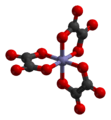squiggly
- 3,277
- 263
I certainly don't mind. In this thread, you should be sure of the information you are providing. I have been very careful to not provide information that I do not have expertise in without the added caveat that I can't say for certain. If everyone follows a similar process, we will all come away enriched. That's all I ask of anyone, beyond that--share your wisdom with us, by all means!
On to the meat:
Okay this is a tough question--because it's an argument which can be drawn out to extremes.
In terms of actual dissolved oxygen, no--this won't cause an issue and will likely increase yields as suggested.
However, it is possible to have too much oxygen throughput. This can mess with absorption, and can oxidize some macromolecular nutes that you may have applied. It won't usually do anything to your simple ions.
A good example of what "too much oxygen throughput" might look like can be seen here:
As I said, this is on an extreme end of the spectrum. With this much oxygen moving through (and with small bubble size--also important) you could potentially start to precipitate out some of your nutes, especially if you use any powders.
For most purposes, this shouldn't pose a problem.
Papa also brings up a great point--a bigger pump with the same stone is not likely to give the best results (though it could under some circumstances). You could end up accelerating the bubbles towards the surface faster and actually reducing your DO.
The smaller the bubbles the less this matters.
Oxygen is oxidative, as you might imagine, and that can cause problems for your bennies if DO levels are too high--but by and large this shouldn't cause issues. As for the plant, you might see some oxidative stress on the roots at maximized DO levels, but nothing visible--and frankly because of the lifespan of the plant (less than a year) oxidative stress is not a huge issue. The plant will kill itself long before oxidative stress will give it cancer or erode its biological systems.









